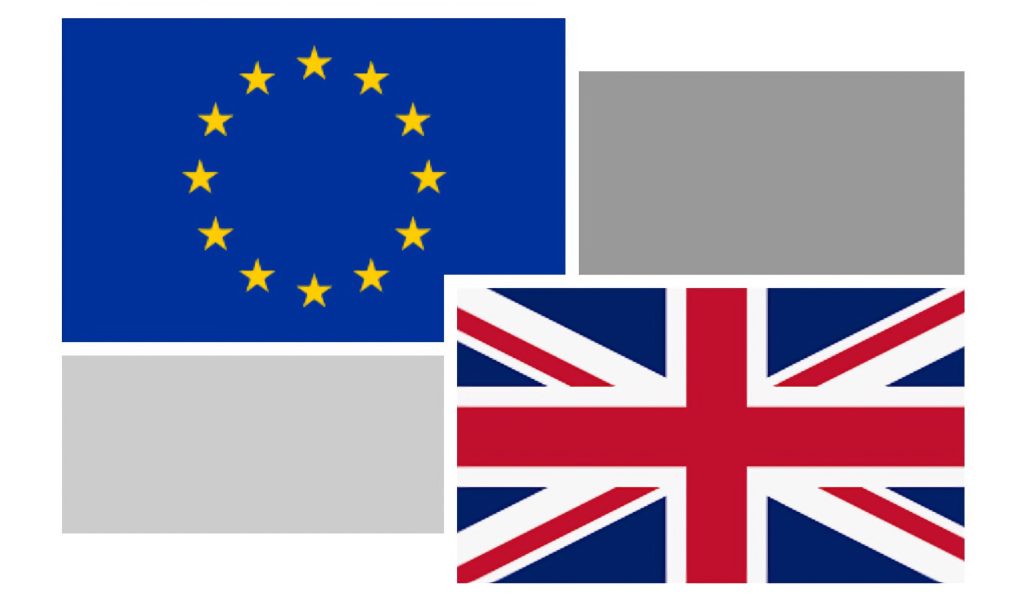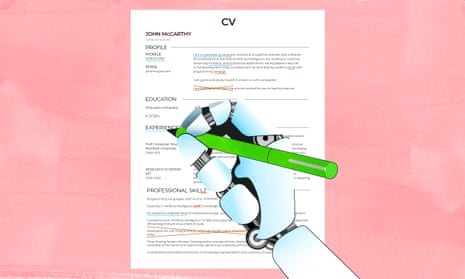Navigating AI Regulation: How the EU and UK Promote Innovation Differently
AI Regulation: A Pro-Innovation Approach – EU vs UK
In this article, we explore the contrasting approaches of the UK and the EU regarding AI regulation. The UK is pursuing a pro-innovation regulatory framework, while the EU is working on its proposed Artificial Intelligence Act (EU AI Act). This analysis highlights the efforts of both regions to foster growth and innovation in the AI landscape.
AI offers immense benefits to society, ranging from healthcare breakthroughs to advancements in climate change mitigation. A notable example is DeepMind, a UK-based organization, which has developed an AI capable of predicting the structure of nearly every known protein. Governments are now considering how regulatory frameworks can facilitate AI development effectively. The technology has not yet reached its full potential; given the right environment, it could enhance numerous sectors, stimulate economies, create new job opportunities, and improve workplace efficiency.
The UK government recognizes the need for prompt action to maintain its leadership in the international AI governance dialogue. They aim to establish a clear and favorable regulatory landscape that positions the UK as a prime location for foundational AI businesses. Similarly, EU legislators aspire to make the EU a central hub for AI innovation. In both cases, responding to risks and fostering public trust are fundamental objectives. However, effective and consistent regulation can also encourage business investment and enhance confidence in innovation.
For the industry, building and maintaining consumer trust is crucial for nurturing innovation-driven economies. Both the EU and the UK must create proportional regulatory measures that support responsible AI applications; otherwise, they risk imposing burdensome regulations on all AI technologies.
Policy Objectives and Intended Effects
Both the UK and the EU share similar overarching goals concerning AI policy. The following table outlines their core objectives related to growth, safety, and economic success:
| EU AI Act | UK Approach |
|---|---|
| Ensure AI systems are safe and comply with existing laws on fundamental rights. | Drive growth by enhancing innovation, investment, and public trust to leverage AI’s opportunities. |
| Strengthen governance and enforcement of safety requirements for AI systems. | Position the UK as a global AI leader, ensuring optimal conditions for AI development. |
| Facilitate a compliant and secure market for trustworthy AI applications. | Ensure legal clarity to promote investment and innovation in AI. |
Challenges Addressed
Both regions share a common concern: the end-user. The integration of AI in various sectors—from simple chatbots to complex biometric systems—means user experiences are significantly impacted. Protecting end-users remains a central theme in both regulatory approaches:
| EU AI Act | UK Approach |
|---|---|
| Address safety risks posed by AI systems. | Mitigate market failures that hinder proper response to AI risks. |
| Protect fundamental rights against violations by AI systems. | Aim to minimize consumer risks, including health and privacy concerns. |
| Resolve legal uncertainties that may deter businesses. | Clarify compliance requirements for AI systems to encourage development. |
Developing and Using Technology:
In the current landscape, various issues hinder the effective development and use of artificial intelligence (AI) technology. One significant challenge is the enforcement of compliance with fundamental rights and safety regulations. Competent authorities often lack the necessary powers and procedural frameworks to ensure adherence in AI applications. Furthermore, a prevalent mistrust in AI could impede progress in Europe, ultimately affecting the global competitiveness of EU economies.
Another obstacle is fragmentation; varying measures across regions can obstruct the establishment of a cohesive AI single market, jeopardizing the digital sovereignty of the Union.
Differences in Policy Options:
A range of policy options have been evaluated by lawmakers. Encouraging innovation necessitates a comprehensive assessment to address the diverse challenges posed by new operational methods. The European Union is setting a benchmark with Option 3: the EU AI Act, which has been decided upon, while the UK is still in the process of formulating its approach.
- Option 1: Establish a voluntary labeling scheme under the EU, with a definition of AI applicable only on a voluntary basis.
- Option 0: No action—assume the EU will proceed with the draft AI Act from April 2021, while the UK maintains its existing regulatory stance.
- Option 2: Implement an ad-hoc sectoral approach, allowing different sectors to define AI and assess the associated risks separately.
- Option 1: Rely on existing regulators to use non-statutory advisory principles for cross-sectoral AI governance.
- Option 3: Introduce a comprehensive horizontal act on AI, establishing a uniform definition and risk assessment methodology.
- Option 2: Delegate authority to current regulators with a duty to consider principles, reinforced by central AI regulatory functions (preferred option).
- Option 3+: Extend Option 3 to include industry-led codes of conduct for non-high-risk AI.
- Option 3: Establish a centralized AI regulator, imposing new legislative requirements on AI systems, aligned with the EU AI Act.
- Option 4: Create a single binding horizontal act on AI that encompasses all risks without a detailed methodology.
Estimated Compliance Costs for Firms:
Both the UK regulatory framework and the EU AI Act will apply to AI systems being developed, deployed, or utilized in the EU and UK, irrespective of their origin. This framework encompasses both “AI businesses” that create and implement AI systems and “AI adopting businesses” that utilize such technologies. These two categories of firms will likely face differing compliance costs.
Key findings reveal that the compliance costs for high-risk systems (HRS) are highest under Option 3:
- Option 0: 8.1% of businesses provide HRS at a compliance cost of £3,698.
- Option 1: 39.0% of businesses operating non-HRS incur a compliance cost of £330.
- For AI businesses:** Small enterprises have an average of 2 systems, medium firms 5, and large companies 10.
- For AI adopting businesses: Similarly, small businesses have 2 systems, medium-size firms 5, and large enterprises 10.
EU AI Act Compliance Costs:
The overall compliance cost for the five requirements of each AI product under the EU AI Act indicates that information provision incurs the largest expenses:
| Administrative Activity | Total Minutes | Total Admin Cost (€) |
|---|---|---|
| Training Data | 5,180.5 | – |
| Documents & Record Keeping | 2,231 | – |
| Information Provision | 6,800 | – |
| Human Oversight | 1,260 | – |
| Robustness and Accuracy | 4,750 | – |
| Total | 20,581.5 | €29,276.8 |
This comparison highlights that the EU anticipates a lower compliance cost than the UK. However, lower costs do not imply a lenient approach; rather, they stem from a detailed method of cost estimation and standardized pricing metrics. Firms are likely to streamline their processes to enhance efficiency and reduce compliance hours needed.
Lessons from the UK Approach for the EU AI Act:
The upcoming EU AI Act positions Europe as a leader in regulating emerging technologies. Insights from outside the region, particularly from the UK, can inform EU policymakers, guiding them in crucial areas before the EU AI Act is enacted. This is especially relevant for Article 9 of the Act, which mandates that developers create, implement, document, and maintain risk management systems for high-risk AI systems.
Three essential considerations for EU decision-makers stem from the UK approach:
- AI Assurance Techniques and Technical Standards: Unlike Article 17 of the EU AI Act, which only briefly addresses compliance guarantees, high-risk AI system providers must implement comprehensive quality management systems. The EU AI Act could enhance its approach by offering detailed assurance techniques and technical standards that help identify and mitigate potential societal harms.
- Availability of a Toolbox: The UK advocates for a set of tools to evaluate and communicate AI trustworthiness throughout its lifecycle. Techniques such as impact assessments and performance testing, encapsulated in a ‘Portfolio of AI Assurance Techniques,’ can help innovators comprehend their role in broader AI governance.
- A Harmonized Vocabulary: A consensus on key terms related to AI regulation is essential. As both the EU AI Act and the UK Approach evolve, there’s an opportunity for stakeholders to establish a common understanding of fundamental AI concepts and principles, promoting a streamlined transatlantic dialogue.
Key Principles of AI
Shared accountability, safety, privacy, transparency, fairness, and divergent data governance are foundational principles for effective AI deployment. Addressing issues like diversity and environmental and social well-being are crucial in fostering human agency and oversight. Additionally, technical robustness, non-discrimination, governance security, and robust explainability play a significant role in ensuring that AI systems operate fairly and accountably. Contestability and mechanisms for redress are equally important for maintaining trust in AI technologies.
How AI & Partners Can Assist
Our team is equipped to help you evaluate your AI systems utilizing established metrics in anticipation of the forthcoming changes associated with the EU AI Act. We specialize in aiding you to identify, design, and implement relevant metrics tailored to your assessments.
Learn More About AI and Big Data
To immerse yourself in the latest advancements in AI and big data, consider attending the AI & Big Data Expo. This event will take place in Amsterdam, California, and London, co-located with Digital Transformation Week. Explore other upcoming enterprise technology events and webinars powered by TechForge.
About AI & Partners
Since the EU AI Act was first published in 2021, AI & Partners has established itself as a reputable professional services firm dedicated to AI. Our team consists of subject matter experts in their respective fields, staying abreast of the latest industry developments to provide clients with precise and cutting-edge services.
Machine Learning & Container Security
The role of machine learning in enhancing cloud-native container security has gained significant attention.
Innovative Uses of Machine Learning
Exploring how machine learning can transform various business applications across sectors, particularly finance and logistics.
Partnerships with Outsourced Developers
Teaming up with outsourced developers can provide businesses, especially in AI and machine learning, with invaluable resources and expertise.

Magistral AI is making waves in the technology landscape by introducing a new reasoning model that directly challenges established giants in the industry. This innovative approach emphasizes the importance of reasoning capabilities in artificial intelligence, setting a new benchmark for what AI can achieve.
The integration of AI with blockchain technology is reshaping the digital landscape. However, many are still questioning what the AI blockchain truly signifies and how it will impact various sectors. Understanding this relationship is vital for businesses looking to harness AI’s potential to enhance their operations.
In recent developments from Apple, the tech giant has now made its core AI model accessible to developers. This move comes as part of a carefully measured strategy unveiled during the Worldwide Developers Conference (WWDC). By granting access, Apple aims to foster innovation while maintaining a strategic edge in the evolving AI ecosystem.
For those eager to keep up with the latest advancements in technology and AI, subscribing will provide access to premium content directly in your inbox, ensuring you stay informed about the latest developments and trends.
Explore our various categories, including Applications, Companies, Deep & Reinforcement Learning, Ethics & Society, and more to delve deeper into the evolving landscape of AI and its implications across different industries.
List of Countries and Territories
The following is a comprehensive list of various countries and territories:
- Martinique
- Mauritania
- Mauritius
- Mayotte
- Mexico
- Micronesia
- Moldova
- Monaco
- Mongolia
- Montenegro
- Montserrat
- Morocco
- Mozambique
- Myanmar
- Nambia
- Nauru
- Nepal
- Netherlands
- New Caledonia
- New Zealand
- Nicaragua
- Niger
- Nigeria
- Niue
- Norfolk Island
- North Macedonia
- Northern Mariana Islands
- Norway
- Oman
- Pakistan
- Palau
- Palestine, State of
- Panama
- Papua New Guinea
- Paraguay
- Peru
- Philippines
- Pitcairn
- Poland
- Portugal
- Puerto Rico
- Qatar
- Romania
- Russian Federation
- Rwanda
- Réunion
- Saint Barthélemy
- Saint Helena, Ascension, and Tristan da Cunha
- Saint Kitts and Nevis
- Saint Lucia
- Saint Martin
- Saint Pierre and Miquelon
- Saint Vincent and the Grenadines
- Samoa
- San Marino
- Sao Tome and Principe
- Saudi Arabia
- Senegal
- Serbia
- Seychelles
- Sierra Leone
- Singapore
- Sint Maarten
- Slovakia
- Slovenia
- Solomon Islands
- Somalia
- South Africa
- South Georgia and the South Sandwich Islands
- South Sudan
- Spain
- Sri Lanka
- Sudan
- Suriname
- Svalbard and Jan Mayen
- Sweden
- Switzerland
- Syria Arab Republic
- Taiwan
- Tajikistan
- Tanzania, the United Republic of
- Thailand
- Timor-Leste
- Togo
- Tokelau
- Tonga
- Trinidad and Tobago
- Tunisia
- Turkmenistan
- Turks and Caicos Islands
- Tuvalu
- Türkiye
- US Minor Outlying Islands
- Uganda
- Ukraine
- United Arab Emirates
- United Kingdom
- United States
- Uruguay
- Uzbekistan
- Vanuatu
- Venezuela
- Viet Nam
- Virgin Islands, British
- Virgin Islands, U.S.
- Wallis and Futuna
- Western Sahara
- Yemen
- Zambia
- Zimbabwe
- Åland Islands





